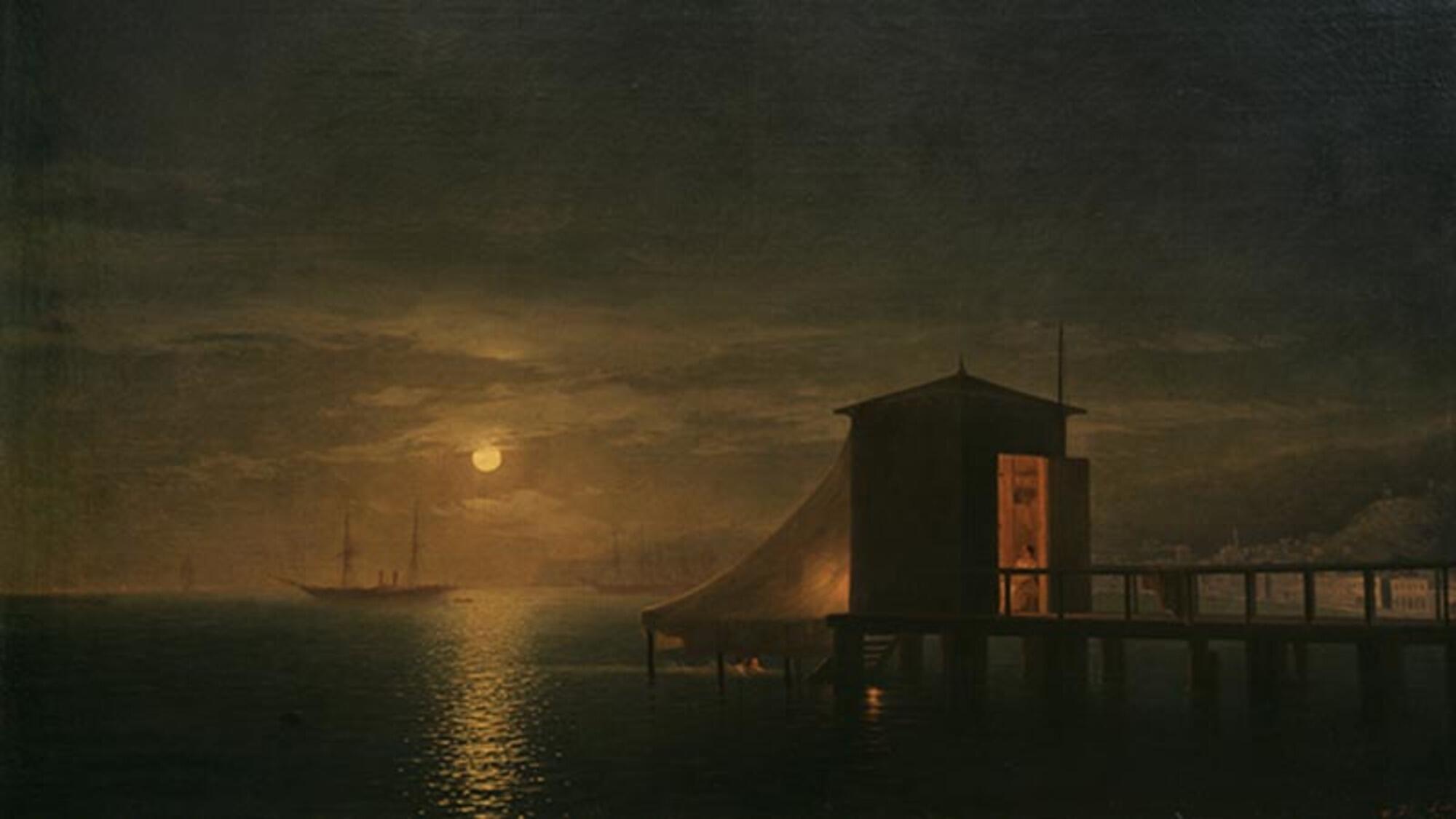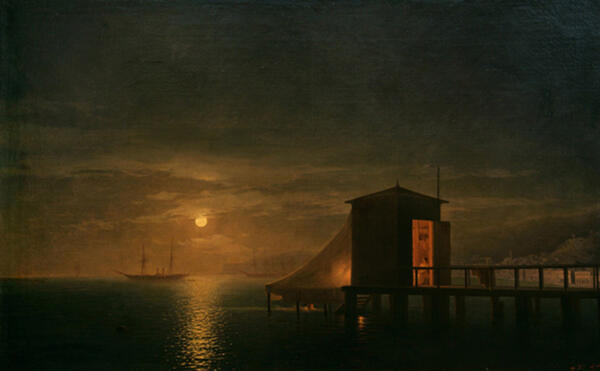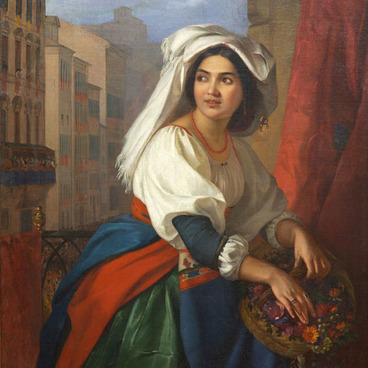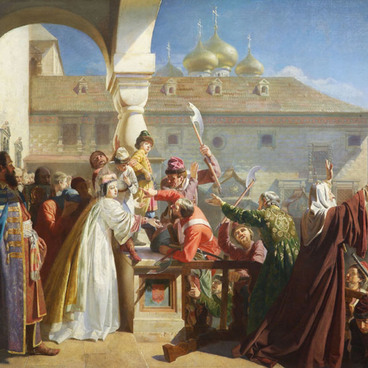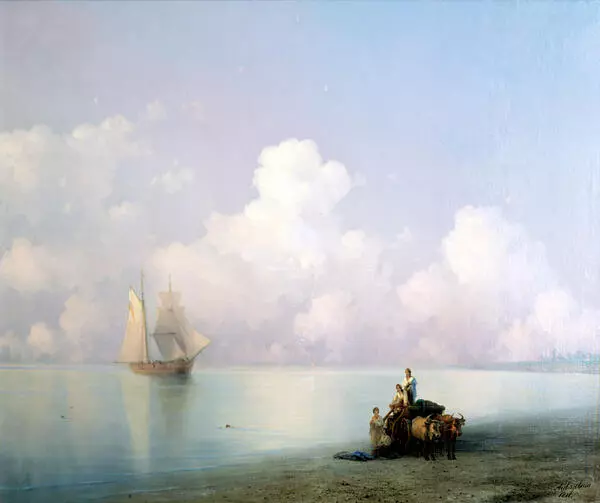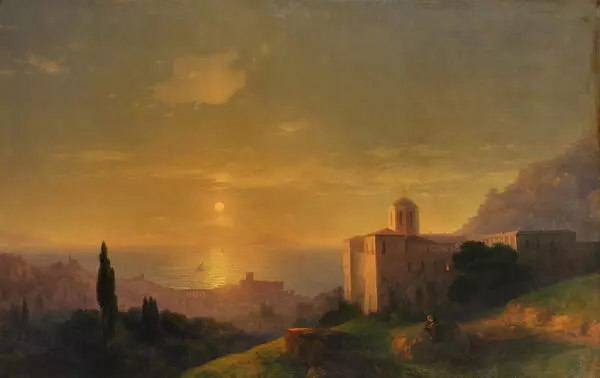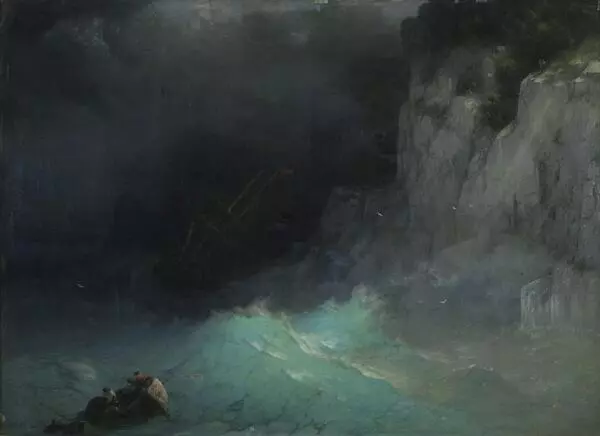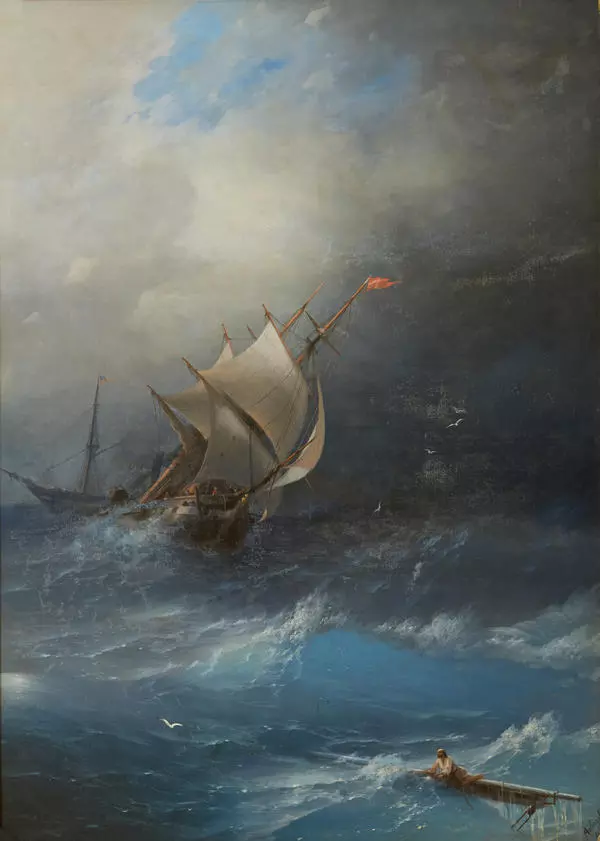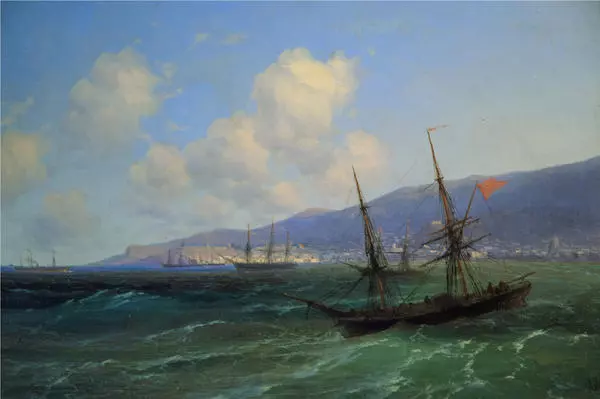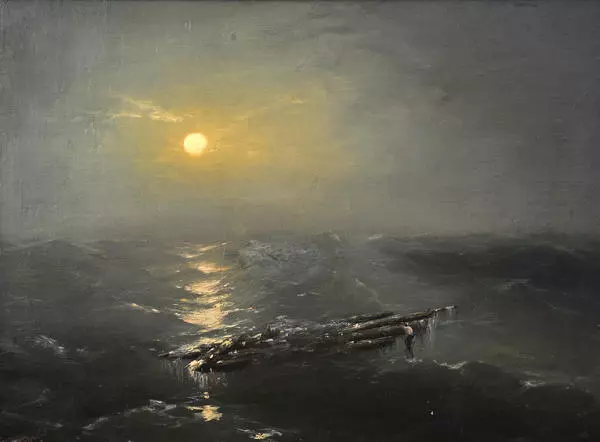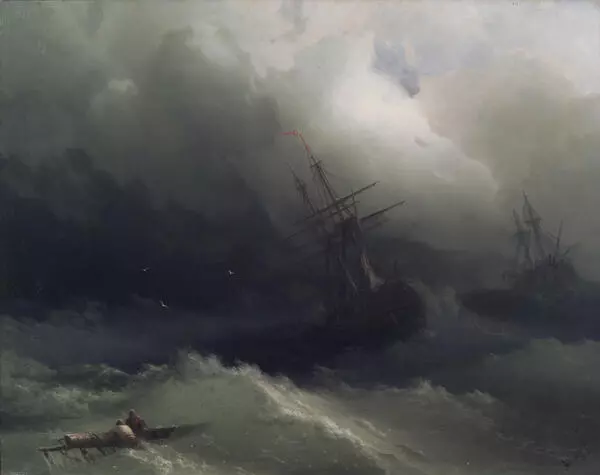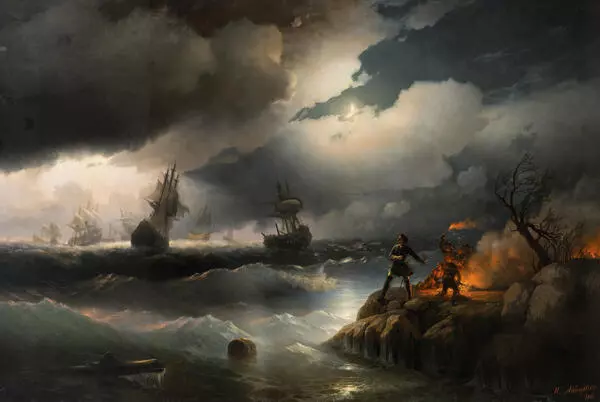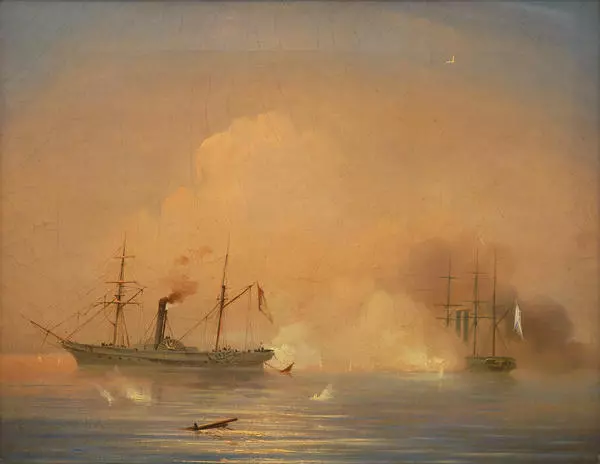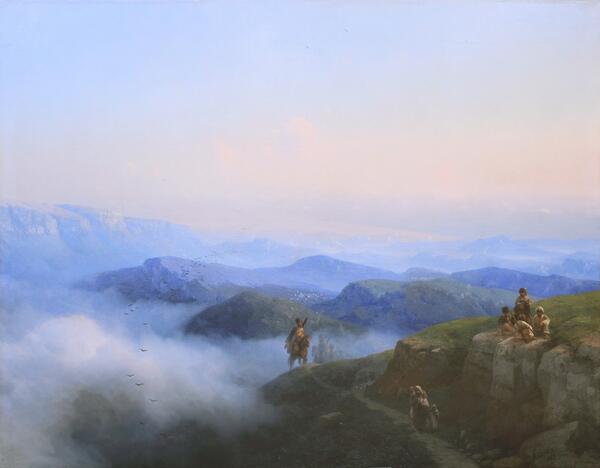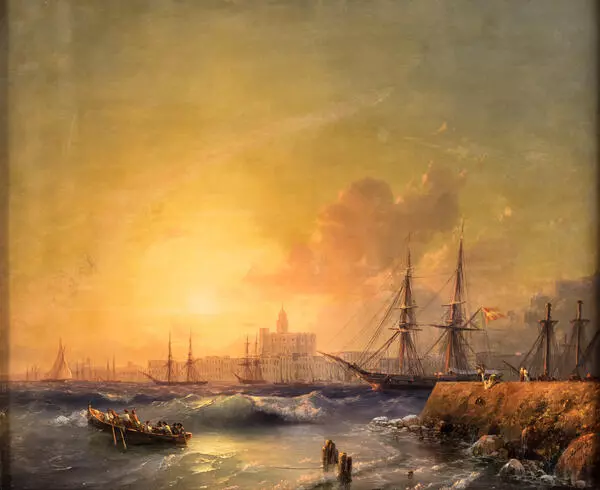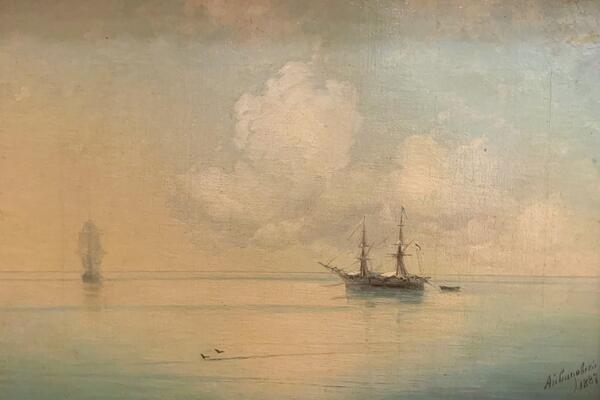Seascapes always fascinated and inspired artists. There is not a single Russian painter who did not try to depict the sea, having visited it least once. Some of them had episodic studies, others returned to this theme from time to time, depicting the sea in their paintings. Among the artists of the Russian art school, only Ivan Aivazovsky devoted his work entirely to marine art.
The artist was endowed with great talent, which he began developing from childhood by receiving a good education. Aivazovsky lived a long life on the shores of his beloved sea, which filled his art with vivid images.
In the vast heritage of the artist one can find landscapes of the plains, compositions on biblical themes and even portraits, but the ‘land’ Aivazovsky, as a rule, is much inferior to the ‘sea’ Aivazovsky. The sea was the main protagonist in his paintings and a source of inspiration throughout his life. The sea became an arena for historical events, scenery for biblical stories, a metaphor for poetic inspiration or human life. No one before or after him depicted the environment in such a variety of moods.
In his work, Aivazovsky counterbalanced the terrible storm and death in the depths of the sea with the views of ‘… a resting sea under a gentle sky in the light of a beautiful moon.’ Among such paintings is the ‘Moonlit Night. Bathing in Feodosia’, painted by the artist in 1853. The Black Sea coastline was familiar to him since childhood, where the artist’s native Feodosia was located.
The edge of the picturesque coast seen in the picture is drawn as if with topographic accuracy. Everything created by man quietly and peacefully coexists here with nature. With an extraordinary sensitivity, Aivazovsky managed to absorb this harmony. The romantic charm of southern night, the expressive effects in the form of a moonlit path playing on the water surface, the soft light pouring from the bath, and the ships seen in the distance — all this is perceived as an unreal fairy idyll painted by the artist.
The artist was endowed with great talent, which he began developing from childhood by receiving a good education. Aivazovsky lived a long life on the shores of his beloved sea, which filled his art with vivid images.
In the vast heritage of the artist one can find landscapes of the plains, compositions on biblical themes and even portraits, but the ‘land’ Aivazovsky, as a rule, is much inferior to the ‘sea’ Aivazovsky. The sea was the main protagonist in his paintings and a source of inspiration throughout his life. The sea became an arena for historical events, scenery for biblical stories, a metaphor for poetic inspiration or human life. No one before or after him depicted the environment in such a variety of moods.
In his work, Aivazovsky counterbalanced the terrible storm and death in the depths of the sea with the views of ‘… a resting sea under a gentle sky in the light of a beautiful moon.’ Among such paintings is the ‘Moonlit Night. Bathing in Feodosia’, painted by the artist in 1853. The Black Sea coastline was familiar to him since childhood, where the artist’s native Feodosia was located.
The edge of the picturesque coast seen in the picture is drawn as if with topographic accuracy. Everything created by man quietly and peacefully coexists here with nature. With an extraordinary sensitivity, Aivazovsky managed to absorb this harmony. The romantic charm of southern night, the expressive effects in the form of a moonlit path playing on the water surface, the soft light pouring from the bath, and the ships seen in the distance — all this is perceived as an unreal fairy idyll painted by the artist.
